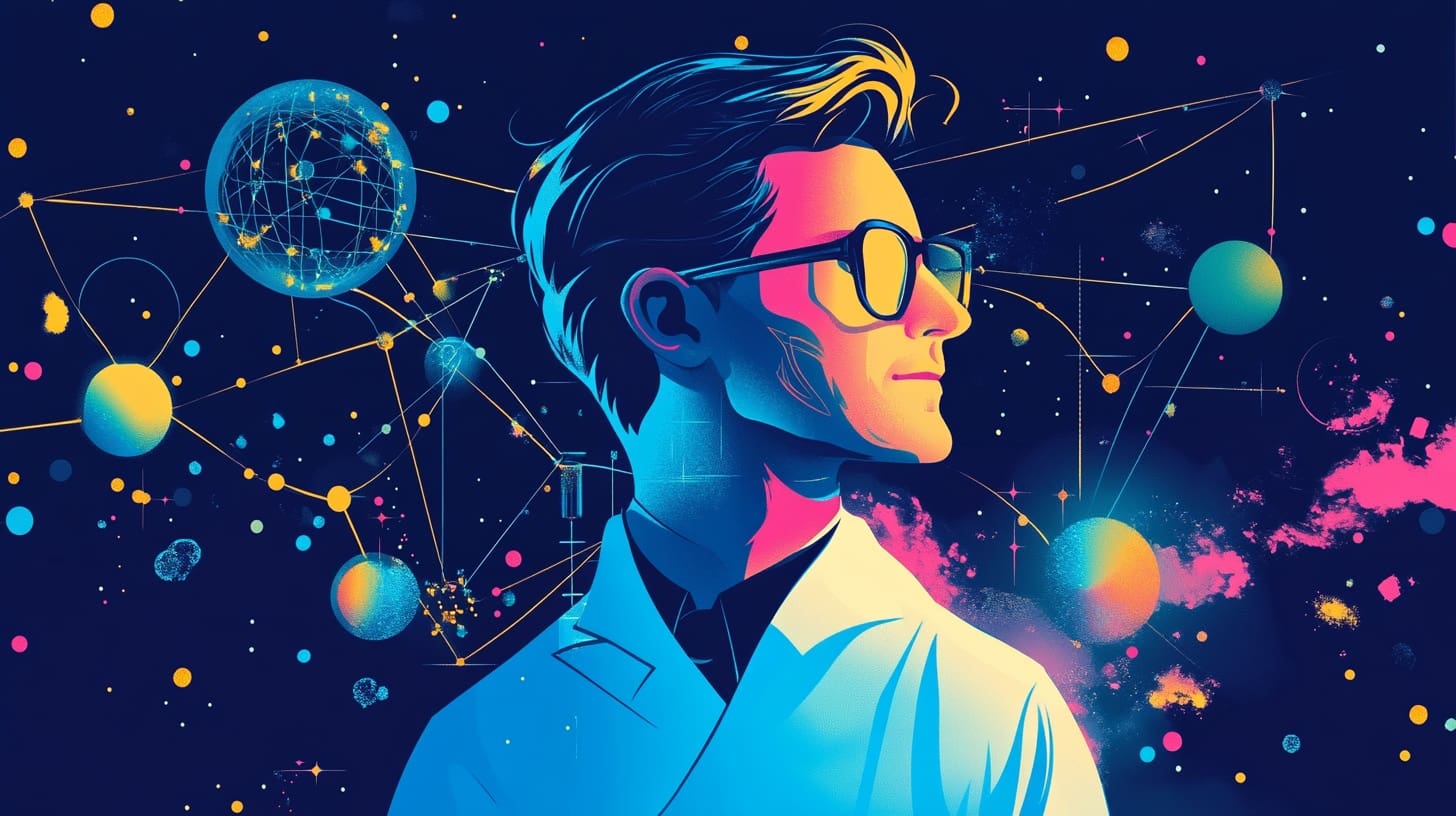Artificial Intelligence (AI) has rapidly transformed from a niche technological field into a powerful driver of change across industries. AI applications have become an integral part of our everyday lives, impacting sectors like healthcare, finance, retail, manufacturing, and beyond. By simulating human intelligence and processing vast amounts of data, AI has enabled machines to make decisions, automate complex processes, and generate insights at unprecedented scales.
AI applications can be categorized into various types, ranging from simple data analysis to advanced predictive analytics and autonomous systems. These applications rely on AI techniques such as machine learning, natural language processing, and computer vision to perform tasks with speed and accuracy, often exceeding human capabilities in certain domains. From virtual assistants to medical diagnostic tools, AI applications are reshaping the way we live and work, paving the way for a future where intelligent systems augment human efforts.
This article explores some of the most impactful applications of AI, highlighting how these technologies are transforming industries, driving efficiency, and improving quality of life.
AI in Healthcare
Healthcare has been one of the most transformative sectors for AI, where it has revolutionized diagnostics, treatment, and patient care. AI applications in healthcare enhance precision, streamline operations, and provide personalized care, helping medical professionals make faster and more accurate decisions.
1. Medical Diagnostics and Imaging
One of the most prominent AI applications in healthcare is medical diagnostics, where AI-powered systems analyze medical images to detect diseases with remarkable accuracy. Algorithms trained on large datasets of X-rays, MRIs, and CT scans can recognize patterns associated with specific conditions, such as tumors, fractures, and infections.
- Benefits: AI-assisted imaging systems offer faster diagnosis and reduce the risk of human error. By identifying diseases at an early stage, these systems improve patient outcomes and help doctors prioritize critical cases.
- Example: IBM’s Watson Health and Google’s DeepMind have developed AI models that can detect various cancers, such as breast and lung cancer, with accuracy comparable to that of experienced radiologists.
2. Predictive Analytics for Patient Care
AI-powered predictive analytics tools analyze patient data, such as medical history, genetic information, and lifestyle factors, to predict health risks and outcomes. These tools allow healthcare providers to proactively manage chronic conditions, identify high-risk patients, and optimize treatment plans based on individual needs.
- Benefits: Predictive analytics help prevent complications by offering personalized treatment recommendations, enabling early interventions, and reducing hospital readmission rates. For instance, hospitals can use AI to monitor patients in real time and alert staff to potential emergencies.
- Example: Health Catalyst’s predictive analytics platform uses AI to identify at-risk patients and recommend preventive measures, supporting healthcare providers in delivering proactive care.
3. Drug Discovery and Development
AI is streamlining drug discovery, a traditionally lengthy and costly process, by identifying potential drug candidates faster than conventional methods. Machine learning models analyze biological data to predict how different compounds interact with target proteins, helping researchers select promising candidates for further testing.
- Benefits: AI accelerates the development of new drugs, reducing time-to-market and costs. This is particularly crucial during health crises, as seen with COVID-19, where AI helped scientists identify treatments and vaccines more rapidly.
- Example: Atomwise, an AI-powered drug discovery company, uses deep learning algorithms to analyze millions of chemical compounds and predict their potential as drug candidates, speeding up the research process.
AI in Finance
The financial sector has embraced AI for a wide range of applications, from fraud detection to personalized financial services. AI-driven tools offer insights, increase security, and automate processes, allowing financial institutions to provide more efficient services and reduce operational risks.
1. Fraud Detection and Prevention
Fraud detection is one of the most crucial AI applications in finance. Machine learning algorithms analyze transaction data to detect unusual patterns and flag potential fraud in real time. By identifying anomalies and high-risk activities, these AI systems help financial institutions reduce losses from fraudulent activities.
- Benefits: AI-powered fraud detection systems provide high accuracy and speed, enabling companies to respond to fraud attempts quickly and prevent significant financial losses.
- Example: Mastercard’s AI-based fraud detection system leverages machine learning to monitor transactions and identify suspicious patterns, minimizing the risk of fraud for both customers and merchants.
2. Algorithmic Trading
Algorithmic trading involves using AI algorithms to analyze market data, identify trading opportunities, and execute trades automatically. These algorithms can process vast amounts of financial data, such as stock prices, economic indicators, and trading volumes, to make split-second decisions based on predefined strategies.
- Benefits: AI-driven algorithmic trading increases trading efficiency, reduces emotional bias, and enhances profitability by optimizing trade timing and strategy.
- Example: Renaissance Technologies, a leading hedge fund, uses AI and quantitative models for algorithmic trading, achieving high returns by leveraging predictive models based on historical and real-time market data.
3. Personalized Financial Services
AI-driven personalization in financial services enables banks and financial institutions to offer tailored services, such as customized investment portfolios, loan recommendations, and spending insights. By analyzing customer behavior, AI can create individualized financial advice and improve customer engagement.
- Benefits: Personalization enhances customer satisfaction by providing relevant and timely financial advice, helping individuals make informed decisions about their finances.
- Example: Wealthfront, a robo-advisor platform, uses AI to provide personalized investment portfolios based on users’ risk tolerance, financial goals, and investment preferences.
AI in Retail and E-commerce
AI has become indispensable in the retail and e-commerce industry, where it enhances the customer experience, streamlines operations, and boosts sales. Through AI-driven insights, retailers can better understand customer preferences and optimize inventory management.
1. Recommendation Engines
Recommendation engines are among the most popular AI applications in e-commerce, providing personalized product recommendations based on customer behavior and preferences. These engines analyze user data, such as browsing history and purchase behavior, to suggest relevant products, improving customer engagement and conversion rates.
- Benefits: AI-powered recommendation engines increase sales by showing customers products they are likely to purchase, creating a more personalized shopping experience.
- Example: Amazon’s recommendation engine leverages machine learning to analyze customer data and suggest products, which accounts for a significant portion of its revenue.
2. Chatbots and Customer Service
AI chatbots are transforming customer service by providing instant assistance to shoppers, answering queries, and resolving issues. These chatbots use natural language processing (NLP) to understand and respond to customer inquiries in a conversational manner, making online shopping more accessible and efficient.
- Benefits: AI chatbots reduce wait times, enhance customer satisfaction, and allow human agents to focus on more complex tasks by handling routine inquiries automatically.
- Example: H&M’s chatbot assists customers with styling advice, order tracking, and return information, making the shopping experience seamless and personalized.
3. Inventory and Supply Chain Optimization
AI-driven inventory management tools analyze sales data, seasonal trends, and external factors like weather and holidays to optimize stock levels. By predicting demand accurately, these tools help retailers avoid overstocking or understocking, improving operational efficiency and reducing costs.
- Benefits: AI-based inventory management minimizes waste, optimizes stock levels, and ensures that popular products are readily available, enhancing customer satisfaction and profitability.
- Example: Walmart uses AI-powered inventory management to predict demand for different products across its locations, ensuring efficient stock allocation and reducing losses.
AI in Manufacturing
AI is driving a new era of automation and precision in manufacturing, from optimizing production lines to predicting maintenance needs. By analyzing data and identifying patterns, AI applications enable manufacturers to streamline operations, reduce downtime, and improve product quality.
1. Predictive Maintenance
Predictive maintenance uses AI to analyze data from sensors on machinery to predict equipment failures before they happen. By identifying early signs of wear and tear, manufacturers can perform maintenance only when necessary, reducing both downtime and repair costs.
- Benefits: Predictive maintenance minimizes production delays, lowers repair expenses, and extends equipment life, enhancing overall efficiency.
- Example: General Electric (GE) uses AI in its Predix platform to monitor industrial equipment, predict failures, and optimize maintenance schedules, saving costs and increasing uptime.
2. Quality Control
AI-powered quality control systems use computer vision to inspect products for defects during production. These systems analyze images of products to detect flaws that human inspectors might miss, such as cracks, misalignments, or other imperfections.
- Benefits: AI-driven quality control improves product consistency, reduces waste, and increases production speed by identifying defects in real-time.
- Example: BMW uses AI-based image recognition in its quality assurance process to detect imperfections in vehicle assembly, ensuring that each car meets high standards before reaching the market.
3. Supply Chain Optimization
AI enhances supply chain management by forecasting demand, optimizing inventory, and improving logistics. Machine learning models analyze historical data, current market trends, and even weather patterns to predict demand more accurately and adjust inventory levels accordingly.
- Benefits: Supply chain optimization reduces excess inventory, cuts down on shipping costs, and helps companies respond swiftly to changes in demand.
- Example: DHL uses AI to predict demand and optimize its logistics network, improving delivery efficiency while lowering operational costs.
AI in Transportation
AI has revolutionized the transportation sector, improving safety, efficiency, and convenience. From autonomous vehicles to smart traffic systems, AI is reshaping how people and goods move from one place to another.
1. Autonomous Vehicles
Self-driving cars are one of the most groundbreaking AI applications in transportation. These vehicles rely on a combination of sensors, computer vision, and machine learning to navigate roads, detect obstacles, and make driving decisions without human intervention.
- Benefits: Autonomous vehicles have the potential to reduce traffic accidents caused by human error, decrease traffic congestion, and improve mobility for people who are unable to drive.
- Example: Waymo, a subsidiary of Alphabet, has developed autonomous vehicles that use AI to navigate urban environments, interact with pedestrians, and adapt to changing road conditions safely.
2. Traffic Management
AI-powered traffic management systems analyze data from cameras, sensors, and GPS to manage traffic flow and reduce congestion. These systems can adjust traffic signals in real-time, redirect vehicles during peak hours, and even provide route recommendations to drivers.
- Benefits: Smart traffic management reduces travel times, cuts down fuel consumption, and lowers emissions by minimizing idle time on congested roads.
- Example: Los Angeles has implemented an AI-driven traffic control system that adjusts traffic light timing based on real-time traffic data, reducing overall congestion and improving the flow of vehicles.
3. Predictive Maintenance for Public Transport
AI applications in public transportation include predictive maintenance for trains, buses, and other public transport vehicles. By monitoring equipment data, AI can predict when components might fail, allowing transit authorities to schedule timely maintenance and avoid service interruptions.
- Benefits: Predictive maintenance improves the reliability and safety of public transportation while minimizing operational disruptions and maintenance costs.
- Example: The London Underground uses AI to predict maintenance needs for its trains and infrastructure, helping to ensure consistent service and reduce unexpected breakdowns.
AI in Education
The education sector has been significantly impacted by AI, which is enabling personalized learning, automating administrative tasks, and making education more accessible. AI applications in education are helping both students and teachers by creating tailored learning experiences and enhancing educational outcomes.
1. Personalized Learning
AI-powered personalized learning platforms use algorithms to adapt educational content to each student’s learning pace, style, and areas of interest. These platforms analyze data on student performance to offer customized lessons, exercises, and feedback, enhancing the overall learning experience.
- Benefits: Personalized learning enables students to progress at their own pace, provides additional support where needed, and keeps students engaged by catering to their unique learning preferences.
- Example: Platforms like DreamBox and Smart Sparrow offer AI-driven personalized learning experiences that adjust content based on student performance, making learning more engaging and effective.
2. Intelligent Tutoring Systems
Intelligent tutoring systems use AI to provide one-on-one support to students in subjects like math, science, and language arts. These systems act as virtual tutors, offering explanations, answering questions, and providing practice exercises.
- Benefits: AI tutors offer accessible, personalized assistance to students outside the classroom, helping them grasp complex concepts and build confidence.
- Example: Carnegie Learning’s MATHia platform uses AI to provide personalized math tutoring, adapting to individual student needs and tracking progress over time.
3. Automating Administrative Tasks
AI helps educators by automating administrative tasks, such as grading assignments, tracking attendance, and managing student records. By taking on these time-consuming tasks, AI allows teachers to focus more on instructional activities and student engagement.
- Benefits: Automated grading and record-keeping reduce the administrative workload for educators, improve accuracy, and allow teachers to dedicate more time to teaching.
- Example: Gradescope, an AI-powered grading platform, helps teachers grade exams and assignments more efficiently, especially in large classes, by automatically analyzing and scoring responses.
Ethical Considerations in AI Applications
As AI technology continues to advance and integrate into critical sectors, ethical concerns have become a crucial part of the conversation. Addressing these ethical issues is essential to ensuring that AI is used responsibly and that its benefits are shared equitably.
1. Privacy and Data Security
AI systems often rely on vast amounts of personal data, raising concerns about user privacy and data protection. Many AI applications, such as recommendation engines and personalized learning platforms, use sensitive information to improve their functionality, making data security a top priority.
- Challenges: Ensuring data privacy while still allowing AI systems to learn from user information is complex. Striking a balance between data utilization and privacy protection is essential to maintaining public trust in AI technologies.
- Solutions: Approaches like data anonymization, encryption, and federated learning (where AI models learn from data across multiple devices without transferring data to a central server) are some methods used to enhance data privacy in AI applications.
2. Bias and Fairness
AI models can inherit biases from the data they are trained on, which can lead to unfair treatment of certain groups or individuals. This issue is especially critical in applications such as hiring algorithms, loan approvals, and law enforcement, where biased AI decisions can have serious consequences.
- Challenges: Bias in AI models may result from unbalanced or historically biased datasets. For instance, if an AI system for hiring decisions is trained on past hiring data with gender or racial biases, it may perpetuate these biases.
- Solutions: Addressing bias in AI requires careful data selection, testing for fairness, and continual monitoring. Some developers use fairness-aware machine learning techniques that attempt to minimize bias in the decision-making process.
3. Transparency and Accountability
As AI systems become more complex, understanding how they make decisions can be difficult even for experts. This “black box” nature of AI poses challenges for transparency and accountability, especially in high-stakes applications like healthcare and finance.
- Challenges: Lack of transparency can erode trust in AI systems, particularly in cases where decisions significantly impact individuals’ lives. Additionally, assigning accountability when AI makes errors is challenging, as it’s unclear who is responsible: the developer, the organization, or the system itself.
- Solutions: Explainable AI (XAI) is a field dedicated to making AI systems more interpretable. This approach aims to provide insights into how AI models make decisions, allowing users to understand and trust the outcomes produced by these systems.
4. Job Displacement and Economic Impact
While AI brings efficiency, it also poses a risk of job displacement, especially in industries with repetitive or predictable tasks, such as manufacturing and logistics. The automation enabled by AI could replace human labor in certain roles, potentially impacting employment and income stability.
- Challenges: Job displacement can lead to economic and social disruptions, particularly in regions heavily dependent on industries vulnerable to automation.
- Solutions: To address this challenge, governments and organizations are investing in retraining programs to help workers transition to roles that require uniquely human skills, such as creativity, critical thinking, and emotional intelligence. Emphasizing education and reskilling can help prepare the workforce for an AI-driven economy.
Societal Impact of AI Applications
The rise of AI has brought both positive and challenging impacts to society. Understanding and managing these impacts is crucial to fostering an AI ecosystem that benefits everyone.
1. Enhanced Accessibility and Inclusivity
AI has significantly improved accessibility for people with disabilities by enabling assistive technologies. For example, speech recognition helps those with limited mobility navigate technology, while computer vision aids individuals with visual impairments.
- Example: Microsoft’s Seeing AI app uses computer vision to describe surroundings to users with visual impairments, enhancing their independence and mobility.
- Benefits: AI-driven accessibility tools allow people with disabilities to participate more fully in education, work, and social activities, promoting inclusivity and equality.
2. Accelerated Scientific Research
AI applications have accelerated research in fields such as biology, chemistry, and climate science by enabling the analysis of vast datasets. Machine learning models help researchers identify patterns, predict outcomes, and simulate complex systems, reducing the time needed for discoveries.
- Example: DeepMind’s AlphaFold model used AI to predict protein structures, a breakthrough that has accelerated research in biology and drug discovery.
- Benefits: AI-driven research tools contribute to advancements in health, environmental protection, and fundamental science, providing solutions to some of the world’s most pressing challenges.
3. Improved Public Services and Safety
AI applications are enhancing public services by improving resource allocation, traffic management, and law enforcement. AI-driven systems can analyze data from sensors, cameras, and other sources to optimize services and make communities safer.
- Example: Smart cities use AI for traffic optimization, waste management, and public safety monitoring, improving the quality of urban life.
- Benefits: By optimizing resources and providing data-driven insights, AI can help governments offer better services, reduce costs, and improve safety for residents.
Future Trends in AI Applications
Looking forward, AI is expected to evolve rapidly, leading to new applications and deeper integration into our daily lives. Here are some of the emerging trends that may shape the future of AI:
1. AI in Climate Action and Sustainability
AI holds potential to address climate change and environmental issues by helping monitor ecosystems, optimize energy usage, and develop sustainable technologies. From predicting natural disasters to managing renewable energy, AI applications are expected to play a significant role in sustainability efforts.
- Example: AI algorithms are used to optimize energy consumption in smart grids, helping reduce emissions and promote the use of renewable energy.
- Potential Impact: AI-driven climate action tools could contribute to reducing carbon footprints, preserving biodiversity, and achieving global sustainability goals.
2. Healthcare Advancements with Personalized Medicine
The future of healthcare will likely see a shift towards personalized medicine, where AI tailors treatments to individual patients based on their genetic makeup, health history, and lifestyle. This approach could improve treatment efficacy and reduce adverse reactions.
- Example: AI models analyze genetic data to predict which drugs will be most effective for specific patients, leading to customized treatment plans.
- Potential Impact: Personalized medicine could transform healthcare by providing more effective and targeted treatments, improving patient outcomes, and reducing healthcare costs.
3. Human-AI Collaboration in Creative Industries
As AI becomes more capable of creative tasks, it will collaborate with humans in fields like art, music, writing, and design. AI-driven creative tools are already generating artwork, composing music, and assisting writers, leading to new forms of artistic expression.
- Example: OpenAI’s DALL-E generates artwork based on textual prompts, allowing artists and designers to explore new visual concepts and styles.
- Potential Impact: AI-human collaboration could enrich the creative process, offering tools to enhance human creativity and inspire new forms of art and design.
4. AI in Robotics and Autonomous Systems
Robotics and autonomous systems powered by AI are set to transform industries such as logistics, healthcare, and agriculture. Robots capable of performing complex tasks autonomously will be instrumental in settings where safety, precision, and efficiency are critical.
- Example: Autonomous drones and robots are being deployed in warehouses for inventory management, reducing the need for human intervention in physically demanding tasks.
- Potential Impact: Advanced robotics could improve productivity, safety, and efficiency across various industries, supporting roles that are dangerous or labor-intensive.
The applications of Artificial Intelligence are vast and varied, spanning industries such as healthcare, finance, education, transportation, and beyond. While AI has brought unprecedented advancements, it also introduces ethical considerations and societal challenges. Addressing privacy, fairness, transparency, and economic impact will be essential as AI technologies continue to evolve and integrate into our lives.
As AI moves forward, the focus should be on responsible development, collaboration, and ethical standards to ensure that its benefits are accessible and its risks managed. AI’s future holds immense promise for solving complex problems, enriching human creativity, and transforming daily life. By understanding and guiding these advancements, society can harness AI’s power to build a more sustainable, inclusive, and innovative world.








